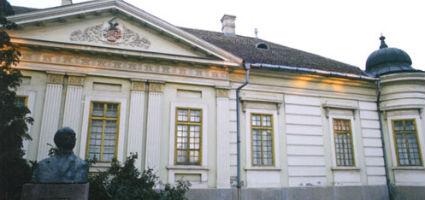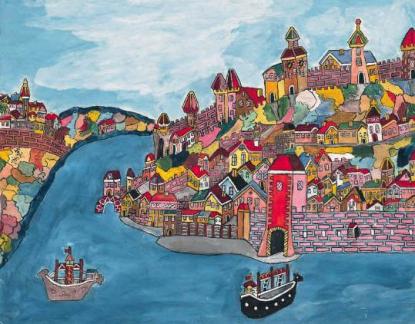2025. July 18. Friday
István Nagy Gallery - Baja - Szentistván
 |
Address: 6500, Baja - Szentistván Arany János u. 1.
Phone number: (79) 325-649
E-mail: bajaimuzeum@gmail.com
Opening hours: 13.03-19.12.: Wed-Sat 10-16
|
The exhibition has closed for visitors.
2006.03.17. - 2006.07.24.
Museum tickets, service costs:
|
Ticket for adults
|
460 HUF
|
|
|
Ticket for students
|
230 HUF
|
|
|
Ticket for pensioners
|
230 HUF
|
|
|
Guide
|
600 HUF
|
|
|
Guide
|
2000 HUF
|
|
|
Photography
|
300 HUF
|
|
|
Video
|
1000 HUF
|
Fejes Imre was born in Eszék in 1904. Five years later, he moved to Újvidék with his parents where he learned the trade of the brush- and button maker. At the time of WWI, he lived in Pest and Nagyvárad. He returned to Újvidék in 1945 where he lived until his death in 1969. Due to his request, the press did not announce his death. Between WWI and WWII he worked as a button- and brush maker, a second-hand book seller, merchant and turner in towns of Yugoslavia: Belgrád, Rijeka, Zágreb, Celje, Mariborb, and Eszék.

He began painting at age 45. After he retired in 1952 due to his bad health, he abandoned himself to painting. First, he participated at a common exhibition in 1955, the next year he presented his works at a one-man exhibition. Ever since then he showed his paintings several times at exhibitions in Hungary and abroad. . E
The rich cultural life and fine art in Újvidék provided excellent opportunity for Fejes Imre to meet his already accepted contemporaries, sculptors, painters etc. who bought his paintings. The writer Bosko Petrovié suggested him in 1952 paint pictures of buildings and manmade objects instead of people, still-lives etc.
He painted without education and experience, following his instincts. However, he became a worldwide known naive painter of the urban landscape. He painted the towns along the coast of the Adriatic Sea and the Northern Sea where his imagination directed his brush. He painted the architectural symbols on buildings as if they were colorful buttons. He worked with the wisdom of children: playfully.
He was a real self-thought painter. Even though he painted with extreme freedom, the pictures are still recognizable and concrete. The black-and-white and colored paintings are like postcards. The view and the colors, however, still represent the imagination of the artist while the scattered buttons betray discernment. He is an excellent artist of the world.
Many of his paintings can be found in museums abroad while his best works are held in Jagodina, in the Museum of Naive Artists.

He began painting at age 45. After he retired in 1952 due to his bad health, he abandoned himself to painting. First, he participated at a common exhibition in 1955, the next year he presented his works at a one-man exhibition. Ever since then he showed his paintings several times at exhibitions in Hungary and abroad. . E
The rich cultural life and fine art in Újvidék provided excellent opportunity for Fejes Imre to meet his already accepted contemporaries, sculptors, painters etc. who bought his paintings. The writer Bosko Petrovié suggested him in 1952 paint pictures of buildings and manmade objects instead of people, still-lives etc.
He painted without education and experience, following his instincts. However, he became a worldwide known naive painter of the urban landscape. He painted the towns along the coast of the Adriatic Sea and the Northern Sea where his imagination directed his brush. He painted the architectural symbols on buildings as if they were colorful buttons. He worked with the wisdom of children: playfully.
He was a real self-thought painter. Even though he painted with extreme freedom, the pictures are still recognizable and concrete. The black-and-white and colored paintings are like postcards. The view and the colors, however, still represent the imagination of the artist while the scattered buttons betray discernment. He is an excellent artist of the world.
Many of his paintings can be found in museums abroad while his best works are held in Jagodina, in the Museum of Naive Artists.
